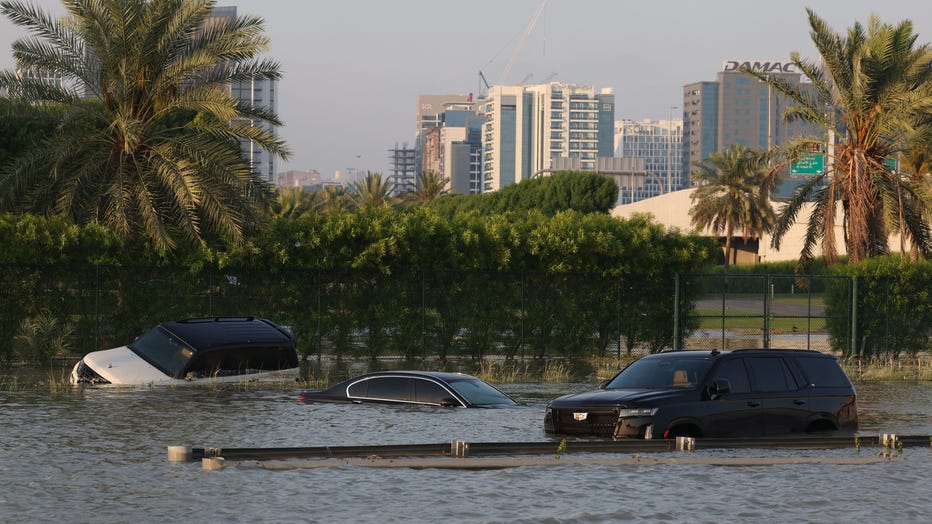Dubai flooding prompts cloud seeding questions

A look at Dubai?s forecast ahead of historic flooding
FOX 4 meteorologist Dylan Federico takes a look at Dubai?s forecast and weather patterns ahead of the historic rainfall and debilitating flooding on April 16, 2024.
In a matter of hours, the heaviest rain ever recorded in the United Arab Emirates flooded portions of major highways and Dubai’s international airport, the world's busiest airfield for international travel.
The rains began late Monday and intensified around 9 a.m. local Tuesday. By the end of the day, more than 5.59 inches of rainfall had soaked Dubai over 24 hours – nearly two inches more than is seen in an average year.
Rain is unusual in the UAE, an arid, Arabian Peninsula nation, but occurs periodically during the cooler winter months. Many roads and other areas lack drainage given the lack of regular rainfall, causing flooding.

FILE - Abandoned vehicles on a flooded highway after a rainstorm in Dubai, United Arab Emirates. Photographer: Christopher Pike/Bloomberg via Getty Images
The country is also known to conduct cloud seeding to increase its dwindling, limited groundwater, prompting many to wonder if those efforts were responsible for the debilitating flooding.
Here’s what to know:
What is cloud seeding?
"Cloud seeding" is a weather modification method that uses planes and ground-based cannons to shoot silver iodide crystals into clouds, attracting moisture to the particles that fall in efforts to increase snow or rain.
Cloud seeding is used all over the world.
Last year, in the United States, the Southern Nevada Water Authority voted to accept a $2.4 million grant from the U.S. Bureau of Reclamation to fund cloud seeding in Western states whose rivers feed the parched desert region.
In 2022, China used cloud seeding in efforts to protect its grain crops amid a record-setting drought.
Cloud seeding and Dubai flooding
Several reports quoted meteorologists at the National Center for Meteorology as saying they flew six or seven cloud-seeding flights before the rains.
Flight-tracking data analyzed by The Associated Press showed one aircraft affiliated with the UAE’s cloud-seeding efforts flew around the country Monday.
The National, an English-language, state-linked newspaper in Abu Dhabi, quoted an anonymous official at the center on Wednesday as saying no cloud seeding took place on Tuesday, without acknowledging any earlier flights.
RELATED: Hurricane, wildfire seasons expected to lead to spike in home insurance rates
Regardless of if the planes flew or not, Amit Katwala, a Wired reporter who’s been following cloud seeding in the UAW for the last few months, wrote that it’s a stretch to say it could be responsible for the flooding.
That’s because cloud seeding can only fractionally boost rainfall that’s already in the works, and the boosted precipitation will only fall locally to where the efforts took place, the American magazine reported. Tuesday’s historic rain was seen all over the region.
Extreme world weather
In neighboring Oman, at least 19 people were killed in heavy rains in recent days, according to a statement Wednesday from the country’s National Committee for Emergency Management.
That includes some 10 schoolchildren swept away in a vehicle with an adult, which saw condolences come into the country from rulers across the region.
Scientists say climate change in general is responsible for more intense and more frequent extreme storms, droughts, floods and wildfires around the world.
This story was reported from Detroit. The Associated Press contributed.

